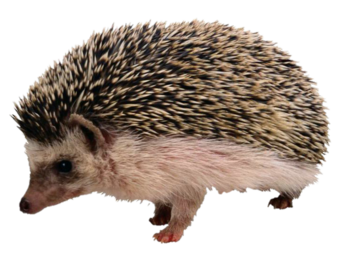None.
The official discord link if you wish to join the discord: https://discord.gg/j5RKwCvAFu
Support the wiki on our official Ko-Fi page or Patreon page!
User:Volt12121/Sandbox

Background
The Komodo dragon (Varanus komodoensis), also known as the Komodo monitor, is a member of the monitor lizard family Varanidae that is endemic to the Indonesian islands of Komodo, Rinca, Flores, and Gili Motang. It is the largest extant species of lizard, growing to a maximum length of 3 metres (10 ft), and weighing up to 70 kilograms (150 lb).
Statistics
Tier: 9-C, Higher with piercing damage
Name: Komodo dragon, Komodo monitor, Varanus komodoensis
Origin: The Real Wolrd
Sex: Varies (Can be Male or Female)
Age: Varies (Usually live up to about 30 years)
Classification: Reptile
Status: Active (Komodo Dragons are are listed as vulnerable[1])
Alignment: Unaligned (Animals have no real moral compass asides from very primitive ones, thus they fall under no true alignment as they're not inherently evil, good, or neutral)
Dimensionality: 3-D
Attack Potency: Peak Human level (Komodo Dragons hunt on deer, water buffalo, wild pigs, dogs, and goats.[2] Dr. Brady Barr, a world renowned herpetologist even claims it to be stronger than a crocodile), Higher with piercing damage (Komodo Dragons have sharps venomous fangs and sharp claws)
Durability: Peak Human level
Striking Strength: Peak Human Class
Lifting Strength: Peak Human (Komodo Dragons need 5 men in order to overpower them)
Travel Speed: Average Human (Komodo Dragons are capable of reaching speed of 10 to 13 mph.[3])
Combat Speed: Average Human
Reaction Speed: Average Human
Stamina: High (Komodo Dragons can swim long distances between islands.[4])
Range: Extended Melee (Komodo Dragons are 10 feet tall)
Intelligence: Animalistic
Powers and Abilities
Superhuman Physical Characteristics, Enhanced Senses (Komodo Dragons can see objects as far away as 985 feet[5] They also can smell carrion, or rotting flesh, up to 2.5 miles away. [6]), Natural Weaponry and Poison Manipulation (Komodo Dragons have a venomous bite which delivers toxins that stop the blood from clotting, [7]), Observation (Type 1; Any living being or object that is capable of making measurements using any of the five senses influence reality in subtle ways, a phenomenon known as the observer effect)
Resistance to Poison Manipulation (European Hedgehogs are are immune to certain poisonous plants[8])
Standard Equipment
Nothing Notable
Optional Equipment
Poison from poisonous plants
Other
Standard Tactics: European Hedgehogs aren't fighter and thus will generally try to run away from their opponent or curl up in to a spiky ball
Weaknesses: The European Hedgehog's face and belly aren't covered in spines and thus are wide open for attacks and they naturally are nocturnal animals
References
- ↑ There are approximately 3000 Komodo dragons remaining in Indonesia, which is only a fraction of its population a mere 50 years ago. They are listed as vulnerable due to habitat destruction from development and natural disasters, loss of large prey (such as deer) from widespread hunting and illegal hunting of the lizards themselves.
- ↑ There are approximately 3000 Komodo dragons remaining in Indonesia, which is only a fraction of its population a mere 50 years ago. They are listed as vulnerable due to habitat destruction from development and natural disasters, loss of large prey (such as deer) from widespread hunting and illegal hunting of the lizards themselves.
- ↑ Although the Komodo dragon can briefly reach speeds of 10 to 13 mph (16 to 20 kph), its hunting strategy is based on stealth and power. It can spend hours in one spot along a game trail — waiting for a deer or other sizable and nutritious prey to cross its path — before launching an attack.
- ↑ Komodo dragons are quadrupeds, meaning that they stand and walk on all four legs. Although these animals are quite large and heavy, they are remarkably agile climbers and can run with a surprising amount of speed. They are also capable swimmers and sometimes swim long distances between islands. Komodo dragons are solitary by nature.
- ↑ Monitors can see objects as far away as 985 feet (300 meters), so vision does play a role in hunting, especially as their eyes are better at picking up movement than at discerning stationary objects. Their retinas possess only cones, so they may be able to distinguish color but have poor vision in dim light.
- ↑ The Komodo dragon's sense of smell is its primary food detector. It uses its long, yellow, forked tongue to sample the air. It then moves the forked tip of its tongue to the roof of its mouth, where it makes contact with the Jacobson's organs. These chemical analyzers "smell" prey, such as a deer, by recognizing airborne molecules. If the concentration of molecules present on the left tip of the tongue is greater than that sample from the right, the Komodo dragon knows that the deer is approaching from the left. This system, along with an undulatory walk, in which the head swings from side to side, helps the dragon sense the existence and direction of food. At times, these reptiles can smell carrion, or rotting flesh, up to 2.5 miles (4 kilometers) away.
- ↑ An adult hedgehog will have around 7,000 spines. Pat Morris was one of the first hedgehog researchers to verify this figure. In his book Hedgehogs, he tells us he did this by cutting the spines off several dead hedgehogs and counting them!
- ↑ Hedgehogs are amazing little mammals that have some tricks that help them avoid predators. Hedgehogs are immune to certain poisonous plants.
Battle Records
None.
None.
